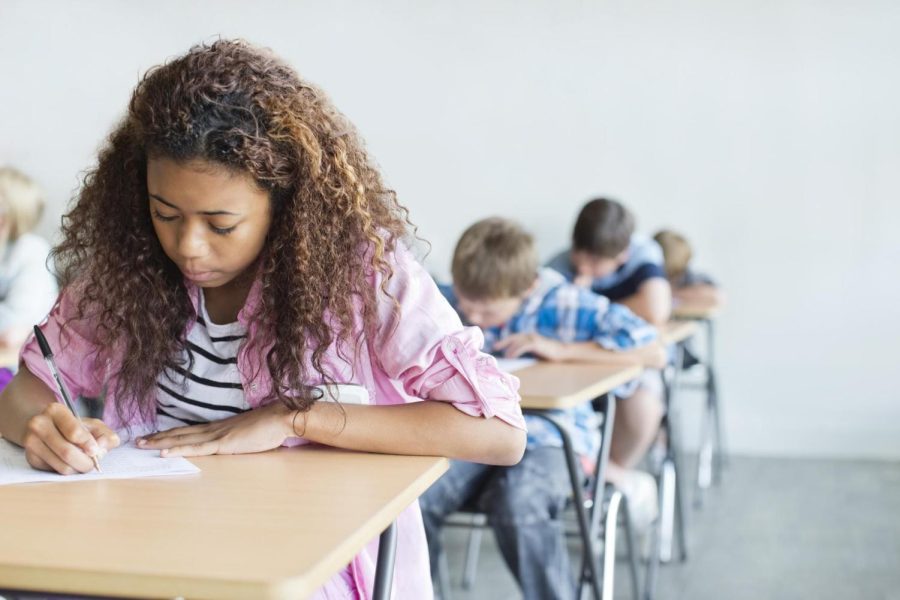Socioeconomic and racial disparities in gifted programs
Beyond being potentially damaging to young students, gifted programs are also sidelining students of color and low-income individuals
Photo courtesy of verywellfamily.com
How equitable are gifted and honors programs?
February 10, 2022
I recently presented some of the potential negative effects and experiences of gifted programs, which can be damaging to students’ mental and emotional well-being in years to come.
In addition to these potentially damaging effects, many gifted programs often perpetuate achievement gaps related to socioeconomic and racial disparities. This also entails bias when recommending and testing students for entry into the program.
Students of color face greater scrutiny in terms of behavior, which can often prohibit them from entry to gifted programs. An article on Education Corner, a resource for parents with school-age children, said, “what is deemed precocious behavior in a white child may be seen as acting out behavior in a minority student.”
Due to this unconscious bias towards minority students, their chances to be recommended for testing would be low in comparison to their white peers who, when demonstrating the same acts, would be seen as gifted. The same holds true for levels of intelligence.
A Vanderbilt University study found that high-scoring white students were twice as likely to be identified as gifted as a similarly scoring black student, and when the teacher is black, the bias dissipates.
This leads to underrepresentation and overrepresentation of the student body in gifted programs. Further, the representation discrepancies are more severe depending on the poverty level of the school.
A Fordham Institute study pointed out class disparities as well: “Although high-poverty schools are as likely to have gifted programs as low poverty schools, far fewer students in high-poverty schools actually participate in gifted programs. While 12.4 percent of students in low-poverty schools with gifted programs participate in the programs, less than half of that proportion (6.1 percent) of students in high-poverty schools participate in gifted programs.”
Of the students participating, there is a common trend that Black and Hispanic students are underrepresented while white and Asian students are overrepresented, depending on the poverty level of the school.
Nationally, “Asian students constitute 4.8 percent of the overall student population and 8.6 percent of students enrolled in gifted programs,” said the Fordham Institute study. “Black students constitute 15.0 percent of the student population and 10.0 percent of those enrolled in gifted programs. Hispanic students constitute 27.6 percent of the student population and 20.8 percent of students enrolled in gifted programs. Finally, white students constitute 47.9 percent of the student population and 55.2 percent of students enrolled in gifted programs.”
This means that nationally Asian students are dramatically overrepresented along with white students; Black and Hispanic students are underrepresented.
The Fordham Institute study states that in high-poverty schools, “both Asian and white students… are statistically overrepresented compared to the proportion of the population they comprise: Asian students constitute 2.7 percent of the student population and 5.8 percent of students enrolled in gifted programs in these high-poverty schools; white students constitute 17.5 percent of the student population and 25.7 percent of students enrolled in the gifted programs. On the other hand, Black students constitute 25.4 percent of the student population and 19.3 percent of students enrolled in gifted programs and Hispanic students constitute 50.3 percent of the student population and 43.7 percent of students enrolled in gifted programs.”
Put simply, in high-poverty schools, white students are exceptionally overrepresented, Asian students are overrepresented, and both Hispanic and Black students are underrepresented.
Finally in low-poverty schools, according to the Fordham Institute study: “Asian students… are the only subgroup that is statistically overrepresented, comprising 10.1 percent of the overall pupil population and 16.2 percent of the gifted-program population. …Black students constitute 4.8 percent of the student population and 2.6 percent of students enrolled in gifted programs; Hispanic students constitute 11.2 percent of the student population and 7.0 percent of students enrolled in gifted programs. White students are represented in gifted programming at a rate very familiar to their share of the overall population in low-poverty schools, with 69.4 percent and 69.1 percent respectively comprising the student and gifted-program populations.”
Notably, in low-poverty schools, white students are statistically represented accurately, and Asian students are overrepresented. Black and Hispanic students are again statistically unrepresented.
While statistics do not compensate for actual qualification for gifted programs, they do show the representation issues and potential bias in gifted programs. Due to socioeconomic and racial disparities that contribute to achievement gaps, gifted programs need to be revised to be inclusive and without bias to highlight the intelligence and perseverance of students who can represent the student body and school.







